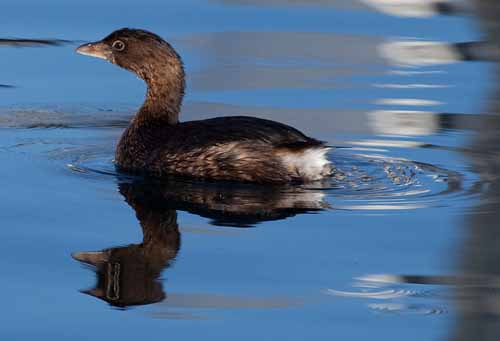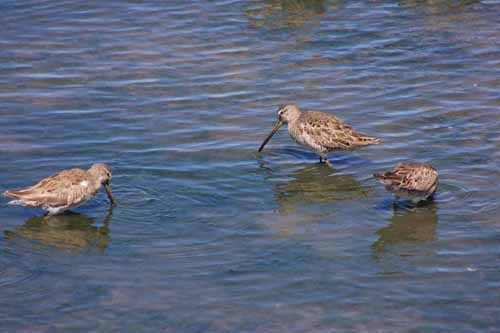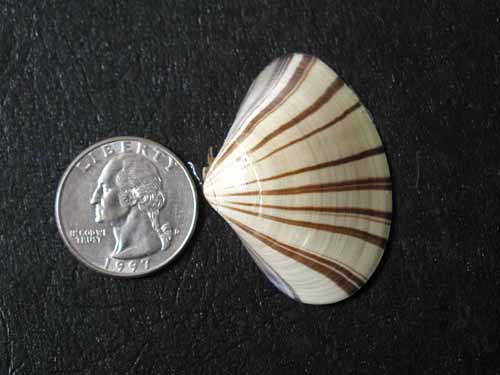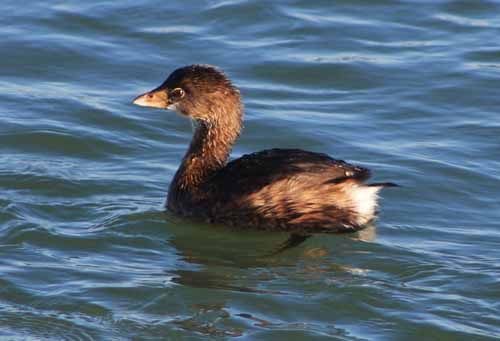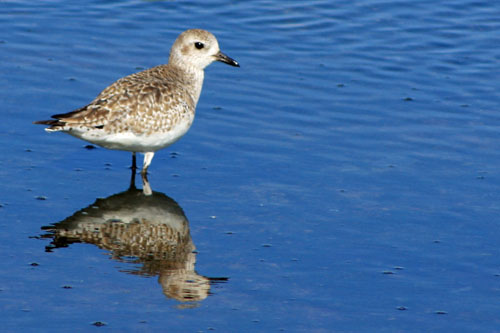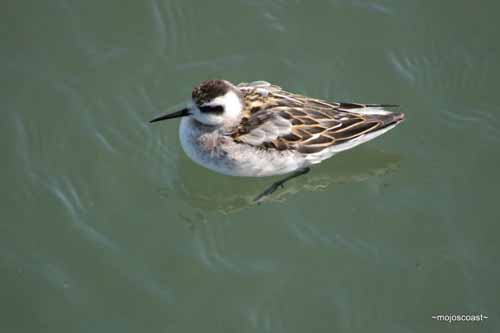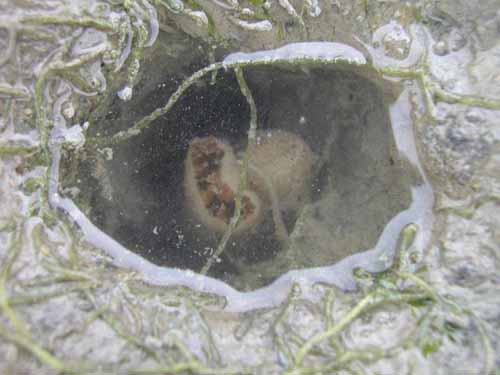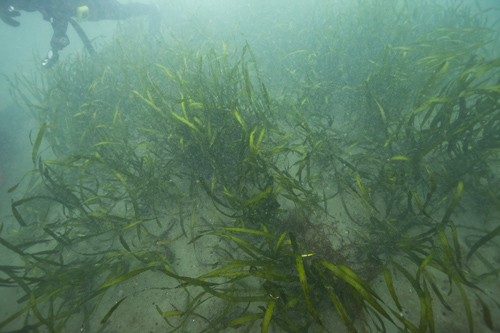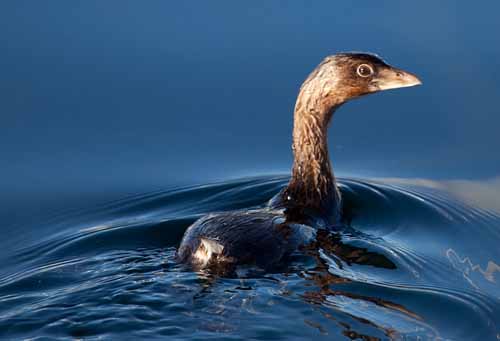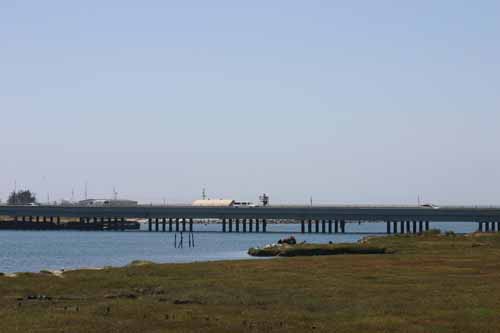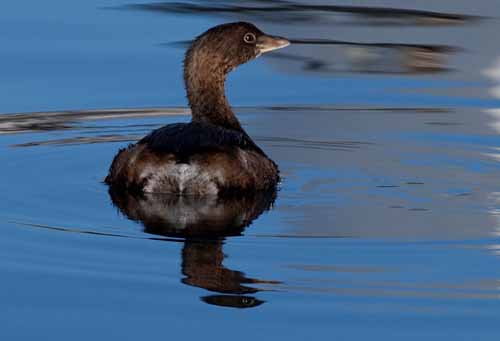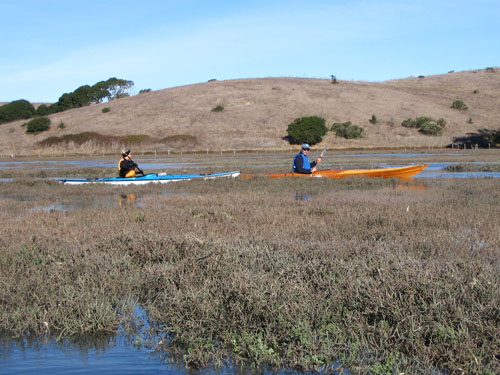Overview
Estuaries represent the confluence of terrestrial, freshwater and marine ecosystems, creating multiple unique habitats that support highly diverse communities and provide important ecosystem services. Unfortunately, these rare but highly productive areas are also very fragile, and human encroachment has compromised their ability to provide biological services (e.g., nursery and feeding grounds for fishes and birds) and has diminished their ability to act as an environmental filter.
During the course of the last century, human activities have altered local hydrology (e.g., with levees, dams, diversions) and impacted water and soil chemistry (e.g., with pesticides, pollutants), which in turn has negatively affected the biological communities within these systems.
In many parts of the world, estuarine habitats continue to disappear as they are converted into arable land for agriculture or to accommodate urban sprawl.
Within or immediately adjacent to the Monterey Bay National Marine Sanctuary there are 26 estuarine habitats identified by the U.S. Fish and Wildlife Service and listed in its National Wetlands Inventory. These listed habitats include an area in Pillar Point Harbor, Pescadero and Scott Creek marshes, four sloughs and 19 lagoons – all of which experience, at least seasonally, some mixing of fresh and salt water. The largest estuary in the sanctuary is Elkhorn Slough, which serves as an important resting and/or feeding stop for migratory species using the Pacific Flyway. Elkhorn Slough also serves an important role in sustaining resident birds that use the resources generated by this highly productive ecosystem.
Designated in 2000 as a Globally Important Bird Area by the American Bird Conservancy, Elkhorn Slough is world-renowned among avid bird watchers for its diversity and abundance of bird species. After San Francisco Bay, Elkhorn Slough has one of the largest remaining salt marshes in California. Its estuarine habitats host more than 100 fish and more than 400 invertebrate species as well as marine mammals, including dozens of southern sea otters.
In addition to habitat loss and alteration at the hands of human activities, estuaries are also threatened by invasive species. Often referred to as biological pollutants, invasive plants and animals have been introduced intentionally or accidentally since the arrival of humans.
In some cases, these species have displaced natives and altered ecosystem structure and function. However, for most of these invasive species, the long-term extent of their impact on estuaries remains unknown.
By 2001, researchers had already documented 56 invasive invertebrate species in Elkhorn Slough, making it the most invaded natural habitat within the sanctuary. In the high intertidal zone of the upper salt marsh, more than 30 invasive plants are also common.
Monitoring
Most of the estuary-related research conducted in the sanctuary takes place in Elkhorn Slough because it is the largest estuary within the sanctuary and it is adjacent to Moss Landing Marine Laboratories, a major academic research institution. It is also part of NOAA’s National Estuarine Research Reserve System, a nation-wide network of protected areas established for long-term research, education and stewardship. Ongoing monitoring programs in Elkhorn Slough focus on water quality, bird censuses, nonindigenous species, and threatened and endangered species.
Monitoring estuaries is challenging because of the numerous habitats and incredible diversity of species found within them. For the same reasons, estuaries also present incredible opportunities to study physical, chemical and biological processes at multiple spatial scales and across different ecosystems (e.g., terrestrial, marine, freshwater). In addition, this information leads to testable hypotheses that will foster a better understanding of the mechanisms driving environmental change and how we can best alter human behavior to reduce our impact on these natural resources.
The Effect of the Moss Landing Power Plant Thermal Discharge Plume on the Distribution and Behavior of Sea Otters: a Preliminary Study
Southern sea otters, Enhydra lutris nereis, have occupied various parts of Elkhorn Slough over the past few decades. Recent observations of otters swimming in and adjacent to the thermal plume generated by the Moss Landing Power Plant served as the catalyst for this project. The study showed that otters were no more likely to occur at the thermal plume than the adjacent harbor mouth; and 95 percent of the observed behaviors were related to foraging.
The Influence of Varying Tidal Exchange on the Fish and Crab Assemblages of Elkhorn Slough
Alteration of freshwater and tidal influence through the construction of water-control structures (e.g., dikes, tide gates, culverts) is one of the most conspicuous and recent anthropogenic disturbances to Elkhorn Slough.
Communities were compared at dozens of sites with unrestricted vs. restricted tidal exchange. Overall, communities at sites with extremely restricted tidal exchange were markedly different from those with full tidal exchange. However, communities at restricted sites with moderate tidal exchange were only slightly different from those with full tidal exchange.
Full exchange appears to optimize native oysters, commercially valuable flatfishes, migratory shorebirds and site-level biodiversity. But minimal tidal exchange resulting from water-control structures supports a suite of estuarine endemic (native) species (including the tidewater goby and California brackish snail) not represented elsewhere and minimizes estuarine invasions. Total estuary-wide biodiversity may be enhanced with a mosaic of tidal exchange regimes.
Characterization of the Benthic and Planktonic Communities of Elkhorn Slough
Analyses of historical phytoplankton communities in Elkhorn Slough show that cryptophytes and diatoms, the two dominant planktonic communities, are inversely related. Cryptophytes are found in the upper slough waters, while the diatoms are near the slough mouth and indicate the strong marine influence there.
The separation of these planktonic communities remains in place, even though the exact locations move up and down the slough with the tides. Macrofaunal invertebrates continue to persist in the main channel, in spite of strong erosionally-driven modifications to substrate. Sea otters, which have increased recently, have not eliminated the slough prey in the same manner observed in similar sedimentary habitats. We believe this is related to the unique sediment refugia in the slough: hard clays exposed by erosion, shell debris and rocks scattered all around the mouth for erosion control. These are common deposits now and they are not easy to dig into.
Land/Ocean Biogeochemical Observatory (LOBO)
The aim of the LOBO project is to design and develop a real-time, in situ chemical sensor network for marine systems. With Elkhorn Slough as a test site, researchers measure nutrients such as nitrate, ammonium and phosphate, using instruments that allow for high-resolution sampling and the ability to access the data in near-real time.
For example, nitrate concentration in Moss Landing Harbor and at the L01 mooring provides an illustration of how the tidal cycle creates significant changes in water properties of the main channel of Elkhorn Slough. Hypersaline water from the upper slough can be seen at low tide, while the incoming tide brings nitrate into the slough.
Nitrate increases during high tide come from internal waves that bring deep, cold, nitrate-rich water from Monterey Bay to the nearshore surface, which then flows into the slough with the tidal bore. A second source of nitrate is the Old Salinas River, which enters the south end of Moss Landing Harbor and has nitrate concentrations as high as 1500 µM.
Long-Term Monitoring Programs of the Elkhorn Slough National Estuarine Research Reserve
The reserve conducts consistent long-term monitoring with rigorous standardized protocols and makes all data available to any individuals, researchers or organizations that request them. Monitoring programs fall into three areas:
- Water-quality monitoring – two programs complement each other: monthly sampling at 24 stations conducted since 1989; and sampling in situ every 15 minutes at four stations.
- Habitat change – the extent and distribution of different habitats is tracked over time, in the estuarine ecosystem and surrounding watershed. Bank erosion is monitored every other year in the field in collaboration with the sanctuary. Sedimentation rates and intertidal elevations are also monitored.
- Biological indicators – about a dozen different taxa are tracked, including coastal amphibians, invertebrates, eelgrass, shorebirds, waterfowl, and breeding terns and egrets. Volunteers are instrumental in collecting data in the field.
Photos
Maps
Elkhorn Slough Elevation
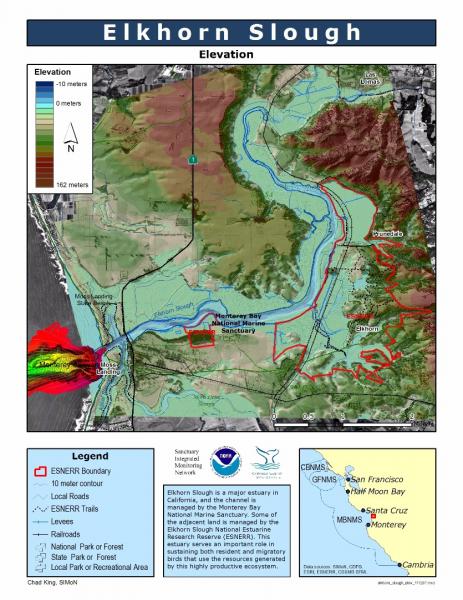
[View Larger]
Elkhorn Slough Land Use
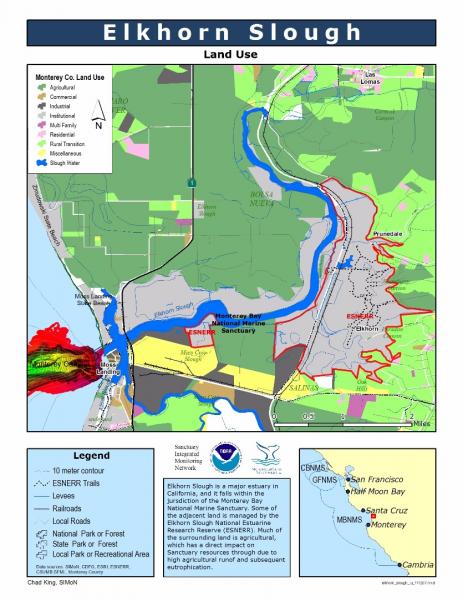
[View Larger]
Elkhorn Slough, Moss Landing and Monterey Canyon
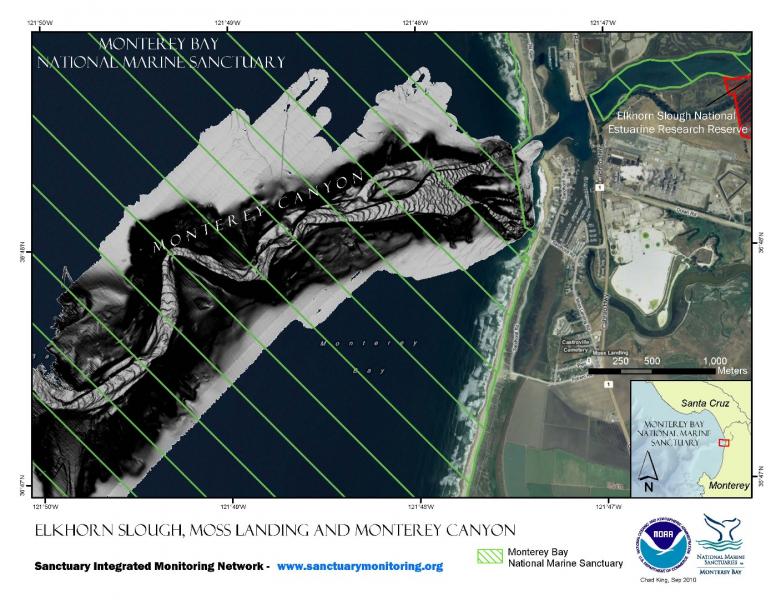
[View Larger]
Projects
Analysis of mussels collected near the Moss Landing Power Plant thermal outfall
The National Oceanic and Atmospheric Administration (NOAA) Mussel Watch Program began in 1986 in order to evaluate pollutant load in U.S. coastal waters by sampling concentrations of contaminants in the tissues of mussels and oysters. In 2006, additional sampling sites were added in the Moss Landing Harbor in order to investigate any differences in contaminant concentrations between mussels near the thermal discharge site of the Moss Landing Power Plant and original Mussel Watch sites. Initial findings show that of the 11 heavy metals sampled, only concentrations of Cadmium (Cd) were found to be higher in mussels near the outfall pipe.Center for Integrative Coastal Observation, Research and Education (CICORE)
The CSU Center for Integrative Coastal Observation, Research and Education (CI-CORE) is a distributed coastal observatory for applied coastal research and monitoring in the nearshore (<100 m water depth) along the entire California coastline.Characterization of the Benthic and Planktonic Communities of Elkhorn Slough
Our goal is an ecosystem description of Elkhorn Slough that will serve as a baseline for assessments of the rapid change in this coastal habitat.Comparison of discharge plumes from Elkhorn Slough and the Moss Landing Power Plant
This project describes and compares the general flow structure, dynamics and temperature differences between a thermal discharge from an anthropogenic point source (Moss Landing Power Plant) and the natural heat flux between two natural bodies of water, an estuary (Elkhorn Slough) and the open ocean.Effect of the Moss Landing Power Plant thermal discharge plume on the distribution and behavior of sea otters (Enhydra lutris nereis): a preliminary study
Southern sea otters (Enhydra lutris nereis) have occupied various parts of Elkhorn Slough over the past few decades. Recently, a large raft of otters has been noted just within the Moss Landing harbor entrance. In addition, some otters have been observed within and adjacent to the thermal plume generated by the Moss Landing Power Plant. This project studies sea otter behavior in and adjacent to the plume.Elkhorn Slough Tidal Wetland Project
The Tidal Wetland Project is a collaborative effort to develop and implement strategies to conserve and restore estuarine habitats in the Elkhorn Slough watershed. This collaboration, initiated in 2004, involves over 100 coastal resource managers, scientific experts, regulatory and jurisdictional entities, conservation organizations, and community members.Erosion monitoring in Elkhorn Slough
ESNERR staff is working with collaborators at CSU Monterey Bay and the Sanctuary to understand habitat changes that have occurred as a result of tidal erosion following the opening of a large artificial mouth to Elkhorn Slough in 1947 by the Army Corps of Engineers. They have documented substantial losses of salt marsh and changes to tidal creek structure.Fish Surveys at the Moss Landing Power Plant Outfall
This is the first study to characterize the fish assemblage associated with the thermal outfall structure used to discharge heated sea water generated by the Moss Landing Power Plant.Hydrodynamics and sedimentation in Elkhorn Slough
The goal of this project is to develop a calibrated 3D circulation model for Elkhorn Slough capable of predicting currents, water levels and transport. It is also intended to be used to estimate rates of sediment erosion, deposition, and transport.Influence of varying tidal exchange on the fish and crab assemblages of Elkhorn Slough
This study investigated how assemblage structure, species distribution and the abundance patterns of fishes and crabs are influenced by variation in tidal flow and freshwater input throughout shallow-water habitats in the Elkhorn Slough estuary.Invertebrate Monitoring in Elkhorn Slough
We use baited minnow traps to monitor native and non-native crab species and count burrows of large invertebrates at sites along an estuarine gradient in Elkhorn Slough.Land/Ocean Biogeochemical Observatory (LOBO)
The LOBO observing system is designed to monitor the flux of nutrients (nitrate, phosphate and inorganic carbon) through the Elkhorn Slough ecosystem. The complete system will include up to eight nodes equipped with nutrient sensors developed at MBARI that are linked to the Internet through a wireless LAN (Local Area Network).Moss Landing Power Plant Post-modernization Thermal Plume Evaluation
A thermal plume evaluation study, which was designed to measure the distribution of heated waters discharged by the modernized Moss Landing Power Plant (MLPP), was conducted in compliance with Central Coast Regional Water Quality Control Board (RWQCB) permit and California Energy Commission (CEC) certification requirements.NERR System Wide Monitoring Program
The National Estuarine Research Reserve System is a network of state-federal protected areas, representing diverse estuarine ecosystems. Elkhorn Slough NERR has 24 partner reserves that are located on both coasts of the US, as well as the Great Lakes and Puerto Rico. Since 1995 these 25 NERRs carry out consistent system-wide water quality and weather monitoring.Nutritional Constraints on Sea Otters in the Monterey Bay National Marine Sanctuary
We are investigating nutritional constraints on southern sea otters (Enhydra lutris nereis) by examining the nutrient composition of sea otter prey while coupling these data with studies on otter foraging behavior.Understanding the effects of tidal wetland management on estuarine invertebrate assemblages in Elkhorn Slough
We collect benthic invertebrate data from poorly characterized sites feeding into the main channel of Elkhorn Slough (ES) to inform wise management by the ES National Estuarine Research Reserve and the ES Foundation.Volunteer Water Quality in Elkhorn Slough
Elkhorn Slough National Estuarine Research Reserve , the Elkhorn Slough Foundation, and the Monterey County Resources Agency have been supporting a volunteer water monitoring program since 1988. Striking differences between sites and seasons were observed but significant long term changes over time are few.Links
AlgaeBase
A database of information on terrestrial, marine and freshwater algae, including photos and search functions.http://www.algaebase.org
Bilingual MERITO Web Site
The English/Spanish MERITO (Multicultural Education for Resource Issues Threatening Oceans) website provides bilingual information on: MERITO programs, dates of upcoming events, background information on a variety of sanctuary issues, downloadable education materials, and current reports and documents related to MERITO.http://www.montereybay.noaa.gov/educate/merito/welcome.html
Birds of Elkhorn Slough
Resources for birdwatchers at Elkhorn Slough include a checklist, bird sightings log, and more information.http://www.elkhornslough.org/sloughlife/birds/
California Coastal Commission - 1995 ReCAP Pilot Project, Monterey Bay Region: Wetlands
This site examines both wetland resources and the institutional framework used to determine how these resources are protected and managed. The historic, current and projected status of wetland morphology (acreage, fragmentation, and habitat), physicochemical processes (hydrology and water quality), and biodiversity are presented.http://www.coastal.ca.gov/recap/chap5.html
California Coastal Commission - Waves, Wetlands, and Watersheds Activity Guide
This classroom and community activity guide addresses issues such as endangered species, marine debris, coastal geology, water use, and much more. It is carefully aligned to the California State Science Content Standards for grades 3 through 8, and includes "Community Action" lessons adaptable for all ages up to and beyond grade 12. Available for free.http://www.coastal.ca.gov/publiced/pendx.html
California Resources Agency - Wetlands Information System
Learn more about California's marshes, estuaries and other wetlands.http://resources.ca.gov/wetlands/
California Resources Agency - Wetlands Information System Education Links
Links provided by the California Resources Agency for reading lists, lesson plans and other information on teaching kids about estuaries.http://ceres.ca.gov/wetlands/ed&research.html
Elkhorn Slough Foundation and the Elkhorn Slough National Estuarine Research Reserve
The Elkhorn Slough is located in the middle of Monterey Bay and provides important habitat for rare plants, animals and many species of birds.http://elkhornslough.org
Elkhorn Slough Tidal Wetland Plan
The purpose of this collaborative planning process is to conserve, enhance, and restore tidal habitats in the Elkhorn Slough watershed by developing strategies to address hydrological management issues.http://elkhornslough.org/tidalwetlandplan.htm
Environmental Protection Agency - National Estuary Program
Website explores these unique environments, including some of the plants and animals that live there. On the site, there are games and activities to teach people how to help protect these natural treasures. Some spanish language resources are available.http://www.epa.gov/OWOW/estuaries
EPA - Estuaries Education
Games and activities designed to teach kids about estuaries.http://www.epa.gov/owow/estuaries/kids/
EPA - National Estuary Program
Learn about the Environmental Protection Agency's estuary protection program.http://www.epa.gov/owow/estuaries/
FOR SEA, Institute of Marine Sciences
Site offers comprehensive and proven hands-on/minds-on K-12 curriculum guides that are available for purchase. Each lesson has student activities preceded by a "Teacher Background" section which contains key concepts, background information, materials needed, teaching hints, extension ideas, and answer keys.http://www.forsea.org
Monterey Bay Aquarium - Student and Teacher Resources and Activities
The Monterey Bay Aquarium offers teacher and student resources including: species and habitat-specific information, live cams, classroom activities, and interactive online games.http://www.mbayaq.org/lc/
National Geographic Xpeditions - Estuaries and Development Lesson
Targeted at the high school level, this website contains a lesson plan that examines a conflict between economic development and the environment and attempts for a sound compromise. Using estuaries as a case study, students are encouraged to consider the interaction between environment conservation and economic demand, and to seek a balance that will protect both the estuarine habitat and economic growth.http://www.nationalgeographic.com/xpeditions/lessons/11/g912/tgestuaries.html
NOAA Photo Library
NOAA's photo library contains incredible shots of an amazing array of animals, technology, scientists, and images of historical treasures. Site also offers search function for images.http://www.photolib.noaa.gov
North Carolina National Estuarine Research Reserve - Information for Teachers and Students
This website has lesson plans based on North Carolina estuaries that can be easily adapted to the Pacific Coast. The site contains a variety of activities and suggestions for integrating estuaries into curriculum or teaching plans. Includes pre-field trip activities that are great for preparation, and after-trip activities for getting the most out of the experience.http://www.ncnerr.org/education/index.html
NOS Education Discovery Kits
Discovery Kits describe the basic scientific principles underlying the applied science and activities of NOAA's National Ocean Service (NOS). Designed for educators and students at the high school level, they are written in easy-to-read, non-technical language, and focus on the themes of oceans, coasts, and charting and navigation.http://oceanservice.noaa.gov/education/kits/welcome.html
Restore America's Estuaries
A nonprofit organization involved in preservation of the nation's network of estuaries by protecting and restoring the lands and waters essential to the richness and diversity of coastal life.http://estuaries.org
The Bridge - Ocean Sciences Teacher Resource Center
Materials and curricula related to many areas of study in the Monterey Bay. Be sure to check the data tip of the month archives. (Supported by the National Sea Grant Office, the National Oceanographic Partnership Program, and the National Marine Educators Association.)http://www.vims.edu/bridge/
USGS - National Wetlands Research Center
Website provides a basis for teachers to develop a tailored, comprehensive study of coastal wetlands. A framework of information and suggestions for activities and demonstrations may be used and revised to accommodate different levels of students.http://www.nwrc.usgs.gov/educ_out.htm
